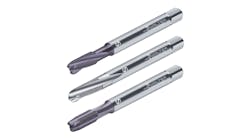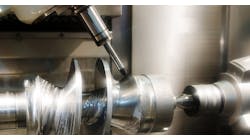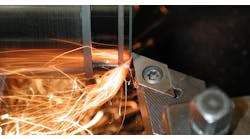Big Drop in Cutting Tool Demand
New Grade for Indexable Steel Milling
Cutting Tool Demand Growing Weaker
Hard Turning with CBN and PCD
CERATIZIT launched the first standard range of products for its High Dynamic Turning (HDT) with FreeTurn process at EMO 2019, and this development is available now to the North American market. High Dynamic Turning, combined with the company’s dynamic FreeTurn tooling, means that it is now possible to carry out all traditional turning operations such as roughing, finishing, contour turning, face turning and longitudinal turning with just one tool.
For decades, new cutting materials, new chip breakers, and new tooling systems have been invented to optimize turning, but the basic turning process remained essentially unchanged. Even now, a contour is created with an indexable insert at a fixed angle to the workpiece. This method has not changed, even with the addition of controllable axes in modern turning-milling centers, machines intended simply to manufacture a component in a single machine work envelope.
Ceratizit has taken advantage of mill-turn machining and developed the High Dynamic Turning (HDT) System: the tool approach and point of contact in the machine can be varied as opposed to conventional turning with a fixed tool.
Instead of the static position of the insert in the holder, now the milling spindle is used to produce the corresponding approach angle to the workpiece. Using the spindle drive in conjunction with the slim, axial tool design of the FreeTurn tools creates 360° degrees of freedom without the risk of collision, thus providing unprecedented flexibility.
Due to the rotation around its own tool axis, the cutting edge change can be done without interrupting the cutting process. Additionally, the angle of approach is freely variable at any time, and can even be changed while cutting. This not only enables flexible machining of almost every workpiece contour, but also optimal chip breaking, higher feed rates, and increased tool life.
Depending on the machine capabilities, the technology can be used functionally in all areas of turning operations. The approach of the milling spindle on the Y/Z axis on turning-milling centers is widespread. As a result, further possibilities can be achieved with HDT that seemed previously unachievable. For example, cutting from above and below is possible. Depending on the machining area and workpiece size, this freedom can be an important factor in production.
In the future, static turning tools will be replaced by dynamic tools, like FreeTurn. Its defining characteristic is simple structure. The tool holder, together with its slim shank and axial concept, which optimize the direction of the cutting forces into the spindle, form a stable unit. At the cutting end, there is a multi-sided insert that is simply screwed in place. The principle is simple: the patented FreeTurn insert can consist of several cutting edges with different properties. This allows for different angle points, corner radii or chip breakers, even different coatings and cutting materials.
The tool can be adapted to the machining requirements, offering the further advantage of replacing several tools on a job. This leads to significant savings in tool-change times, tool magazine loadouts, and tool costs overall. The result is making components with highly complex contours without limitation, using only one FreeTurn tool. This flexibility ensures complex component holding can be quickly and effectively adapted to the new machining situation.
Learn more at www.ceratizit.com/hdt








